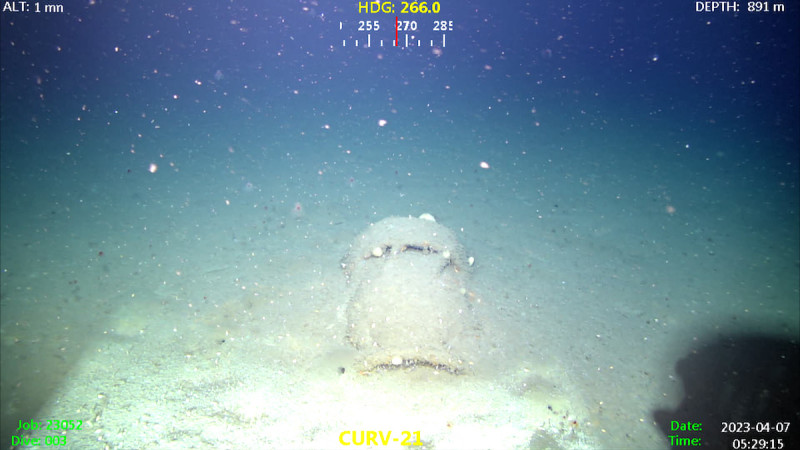

The waters off of the coast of Los Angeles are a major dumping site for chemical materials and as it turns out also munitions and military waste from World War II. Researchers found large amounts of depth charges, boxes of ammunition and military smoke devices on the seafloor.
That’s according to findings shared by scientists at UC San Diego’s Scripps Institution of Oceanography, released on Friday, Jan. 5. The military waste is only part of a wider amount of material dumped into the sea that the survey mission found.
Researchers were surveying the San Pedro Basin as part of a project to map the extent of toxic waste dumping in the region. The research mission, done in collaboration with the U.S. Navy Supervisor of Salvage and the Office of Naval Research in April, used underwater drones and remote-operated vehicles equipped with sonar and HD video cameras, able to operate as deep as 6,000 meters below the surface. The survey site covered 135 square miles of the sea floor.
The exact amount of munitions and other military waste in the waters near Los Angeles was not specified, although the Scripps Institution described it as a “high volume.” Industrial waste was dumped into the waters between the 1930s and 1970s, although the identified munitions are specifically from the World War II era.
The munitions were found mostly around 3,000 feet below sea level. They include Hedgehog and Mark 9 depth charges meant for combating submarines, as well as Mark 1 smoke floats. Those were used often to obscure ships’ profiles for maneuvers.
Subscribe to Task & Purpose Today. Get the latest military news and culture in your inbox daily.
“The resolution of the sonar provided by the U.S. Navy Supervisor of Salvage provides us an unprecedented map of the seabed which will take some time to fully appreciate and analyze,” Eric Terrill, one of the lead scientists on the survey, said in a statement.
There was no great battle near Los Angeles — the military fired artillery and machine guns in response to a suspected air raid in February 1942 but that was a false alarm — but the city is a major port and was during World War II. Ships returning from deployment in the war traveled to Los Angeles, and the Navy said the discarded munitions “ are likely a result of World War II-era disposal practices.” According to the Navy, such practices were allowed at the time.
The area surveyed is already a major dumping ground for dangerous material, mainly DDT (a pesticide banned in 1972) and other chemicals. In 2021, a previous survey found more than 25,000 “barrel-like objects” off of the coast, which were believed to be possible toxic material dumps. The Environmental Protection Agency’s own research in response to this found that traces of DDT found in animals and the sea floor were likely the result of dumps directly into the water rather than in barrels.
The Scripps Institution said the new survey findings will be studied to better understand what environmental hazards the chemicals as well as the World War II-era munitions pose. The Navy said in its statement that it is “reviewing the findings to determine the best path forward to ensure that the risk to human health and the environment is managed appropriately and within applicable federal and state laws and regulations.”
Given the time elapsed and the depth underwater, it’s unclear if any of the discarded military equipment and weapons are still operational and if they still pose a risk as unexploded ordnance. Unexploded ordnance from World War II (and even World War I) remain a hazard around the world, although mostly above the sea. Still, there is a risk. As the Los Angeles Times reported earlier this week, a World War II-era U.S. Navy Mk 15 Mod 2 practice bomb washed ashore in Santa Cruz County, prompting an explosive ordnance disposal team to respond.
The latest on Task & Purpose
- Air Force fires commander of Wright-Patterson Air Force Base
- San Diego vs Parris Island: Who has the toughest Marine boot camp?
- How many Russian generals have been killed in Ukraine?
- Why won’t the Army won’t let Santa fly on its helicopters: An investigation
- How World War I soldiers gave America the wristwatch